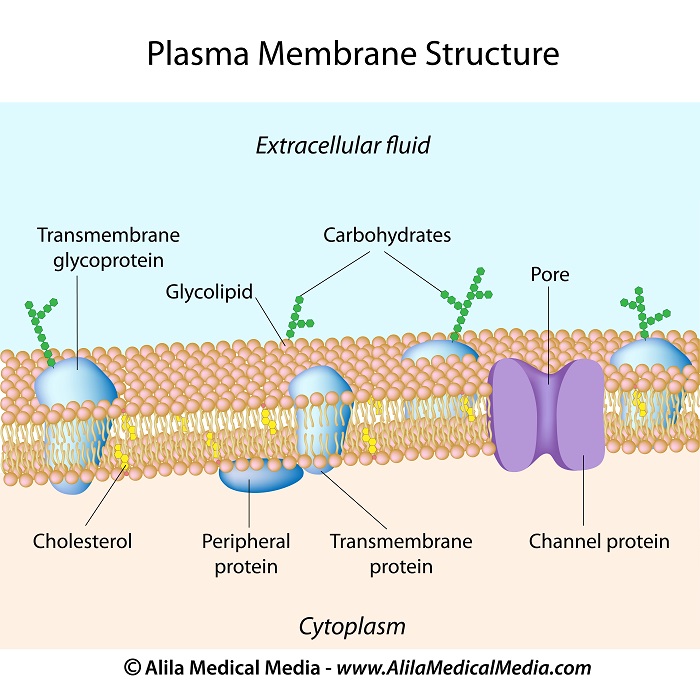Cell Structure and Function Explained Clearly
Basics of Cell Biology explained in 9 min - It's mind-boggling how simple it is!
This lesson includes an animated video lecture, downloadable images, quiz questions and a PDF
All living organisms are composed of cells. Cells are responsible for all anatomical and physiological features of all body systems. Different cell types can vary greatly in shape and size but they all have a common structure and similar components.
A typical cell is enclosed in a plasma membrane and contains a nucleus and a cytoplasm.
The plasma membrane serves as the cell’s boundary, controlling the traffic of substances in and out of the cell. It is also the site of communication between the cell and its environment.
The membrane consists mainly of 2 layers of phospholipids (75% of all lipids), with their hydrophilic heads - the phosphate groups - facing the aqueous environments inside and outside the cell; and their hydrophobic fatty acid tails facing in together.
Other membrane lipids include: cholesterol (20%), which is essential to membrane structure and fluidity; and glycolipids (carbohydrate +lipid) - 5%, which maintain membrane stability and facilitate cell to cell interactions.

The lipid membrane is dotted with membrane proteins, of which there are 2 types:
- integral, or transmembrane, proteins, which span across the membrane, some passing through multiple times. Some transmembrane proteins have a small carbohydrate chain on the outside of the cell (glycoproteins).
- and peripheral proteins, which attach to the membrane on the inside. A peripheral protein typically functions together with an integral protein.
Membrane proteins fulfill a variety of functions:
- As receptors (or receptor-associated proteins), they receive messages from outside the cell. For example, a non-steroid hormone must bind to a membrane receptor and act via several other membrane proteins to activate a cellular response. Each receptor is specific to a certain molecule.
Subscribe to our "Anatomy and Physiology" course below to continue!
This content is available within the following courses:

Anatomy and Physiology: More than 80 animations, plus downloadable PDFs, downloadable images, and quizzes.

Anatomy and Physiology: More than 80 animations, plus downloadable PDFs, downloadable images, and quizzes.